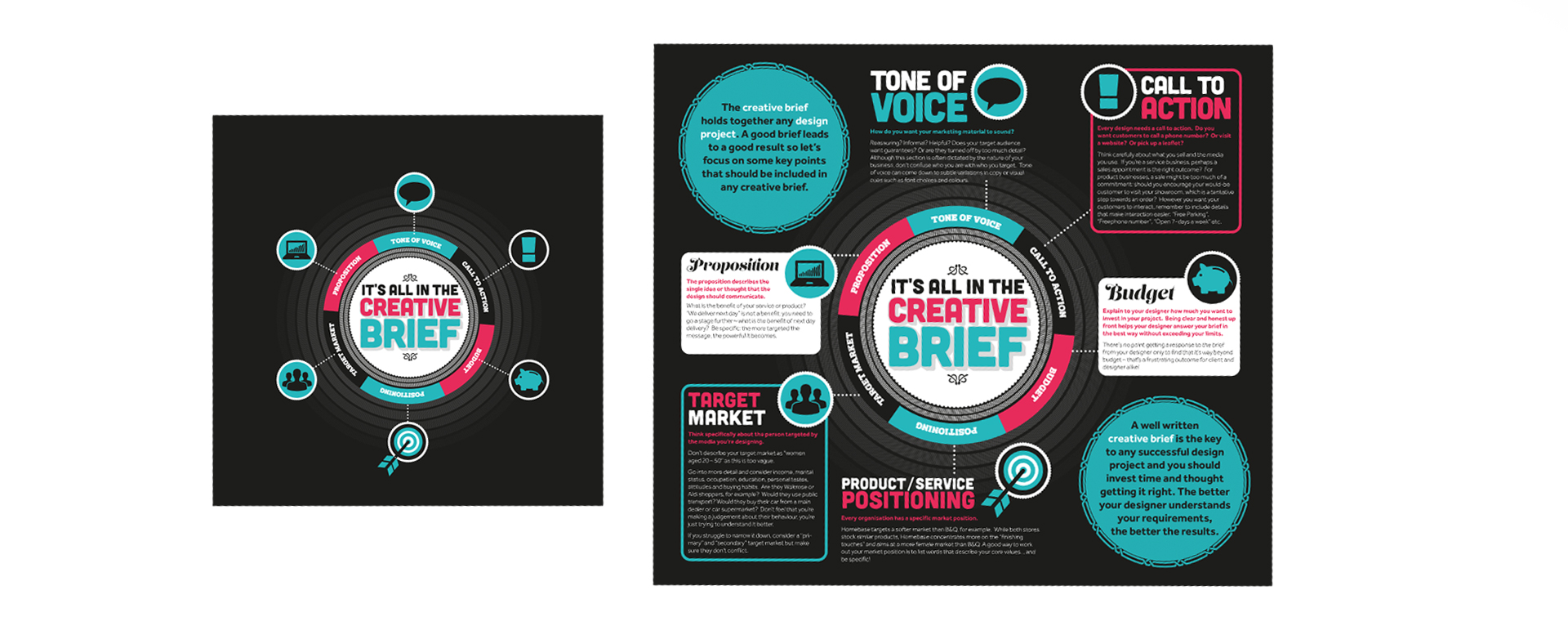Why use visuals to tell a story?
Nowadays, there are so many things that distract us and marketing has often become a simple contest in who shouts the loudest. Of course, content is key but there’s no escaping the fact that your audience wants to consume info quickly.
Using visuals in your storytelling makes an impression in a very short space of time. They help make your message more memorable and often makes explaining a concept a lot simpler. Think of the classic Venn diagrams or pie charts when you were at school. Including visuals within text increases readability and makes the content appear less challenging to the reader.
Visual storytelling is as equally well suited to busy social platforms such as Linked In, as it is to Keynote style presentations or inbound marketing.
Where to begin
Content is king. So asking your designer to come up with a killer graphic is unlikely to work if the story you are telling is of little interest. So before you start, it’s worth questioning :
- Does my story provide a compelling narrative that my target audience is interested in?
- Does it lend itself to being designed as a visual? Is it simple enough and will the visual add value to my communication?
Format examples
The second thing to consider is the format of your communication. Of course, it’s really your designer’s job to work this out, but it is worth thinking about this before you brief them. Here are some examples:
A brand back story, or sequence of events
A graphical timeline lends itself perfectly to this scenario. By being creative it is possible to include additional elements. Were their hurdles to overcome? Goals? Significant moments? All of these can all be included as graphical elements.
If your story isn’t an ordered sequence, then consider how you present that information. Break things down and simplify. Below is a graphic we produced many years ago that help our clients consider what needs to be included in a creative brief. We still use this poster today as it’s more engaging than a simple checklist document.

Conveying relative numbers
Showing graphical blocks or using pictorials is a excellent way of conveying relative numbers quickly and effectively. One common way to use graphical elements is through the use of proportional shapes, such as circles or squares, to represent values or quantities.
For example, a bar chart may use proportional circles to represent the percentage of a population that falls into each category, with larger circles representing higher percentages. Or using colours creatively, for example showing a colour at 100% vs. a tint of the same colour at 10% tells a story instantly.
Or using universally recognised colours together, red and green (stop/go) or blue and red (hot/cold) to tell a story or illustrate a point. These concepts exist for a reason so it’s a good idea to make full use of them.
Demonstrating a thought or concept
Show don’t tell. Sometimes it saves everyone a load of time to simple demonstrate a complex concept. Take the example below, this is an animation we developed to explain the concept of branding to our audience. Taking a well known object and applying it in context is a sure fire way of helping people understand.
Promoting benefits and product features to encourage sales
Another effective way to use visual storytelling is through the use of iconography, which involves the use of simple, universally recognized symbols or images that represent key features or benefits of the product. Iconography is important because it allows for quick and easy communication of important information about the product, even to those who may not be able to read the language on the packaging. By using visual storytelling and iconography, product packaging can stand out on store shelves and effectively communicate the product’s unique selling points, ultimately leading to increased sales.
![]()
The use of visuals in storytelling is an essential tool that can help to effectively communicate a concept or message to an audience. They can can capture attention and convey information quickly and effectively. By working with a designer, ideas and concepts can be transformed into powerful visual stories that engage audiences and achieve real results.
